The Royal Air Force (RAF) has set the stage for a shift to air combat featuring advanced drones with the release of its ‘Autonomous Collaborative Platform Strategy’.
The document details a move towards an advanced fleet of combat drones.
The strategy states:
“Where appropriate, these platforms will team with other crewed and uncrewed AV across domains, add additional capacity to our current capability, and contribute to many key elements of the Air Operating Concept. By leveraging systems engineering advancements, new uncrewed aircraft can be dynamically developed, designed and produced in a manner that will make combat loss, whilst undesirable, acceptable.”
Looking towards a future just six years away, the RAF envisions a comprehensive integration of these platforms into its force structure. By 2030, ACPs are expected to become “an integral part of the RAF force structure, routinely operating in partnership with crewed platforms to deliver battle-winning military capability across multiple domains as part of a national or coalition force.”
The strategy recognises the significance of “technological advancements and operational risk tolerance” as the driving factors, committing to “continual experimentation and exacting QA ensuring that only the most effective capabilities are matured or kept in service.”
Three outcomes are pivotal to this strategy’s success. Firstly, it calls for the RAF to be equipped with state-of-the-art ACPs that align with the Defence’s strategic imperatives. Secondly, it demands the delivery of “organisational, operational and cultural changes required within the RAF to enable the disruptive effect of ACP.”
Lastly, it champions the creation of “an Industry and Government ecosystem to enable the rapid development, fielding and through-life support of innovative ACP capabilities.”
The strategy further elucidates the cross-domain roles ACP will fulfil, as “Figure 4 below uses the Air Power Model to identify where OA suggests ACP will best support air power roles in the future.” This integrated approach highlights the versatility of Tier 1 ACPs and the bespoke capabilities of Tier 2 ACPs across the spectrum of RAF operations.
Specifically, in the domains of Intelligence, Surveillance, Reconnaissance (ISR), and Attack, the strategy notes that “similar mission sets have been identified, and modular Tier 1 AVs could be readily adapted to the prevailing mission requirements.” Yet, it recognises that certain critical tasks will still require “a specialist, niche capability, potentially across both Tier 1 and Tier 2.”
The RAF say in a release:
“The Defence Drone Strategy provides the core reference baseline for the RAF ACP Portfolio ensuring coherence for the introduction of new developments in capability, supported by lessons learnt in our recent past and in current conflicts.
Advances in human-machine teaming, AI and other technologies mean that the world of uncrewed systems is rapidly advancing towards the use of autonomy. The war in Ukraine has also highlighted the rapid evolution of weapon systems and tactics. The ACP strategy sets out how the RAF intends to take advantage of this technology, working closely with the Royal Navy, British Army, across MoD, with industry, and our trusted partners and allies. This collaborative endeavour will pursue the best solutions for UK Defence, supported by UK industry, to find options with the correct cost-benefit analysis to augment our forces.
Using emerging technologies, ACP will undertake critical roles that complement and enhance the operational effects achieved by our current and future crewed aircraft, acting as a force multiplier. Implementation of this strategy will reduce risks to personnel and provide us with the opportunity and means to learn, develop and fight faster than our adversaries, whilst maintaining a keen eye on the legal and ethical considerations.”


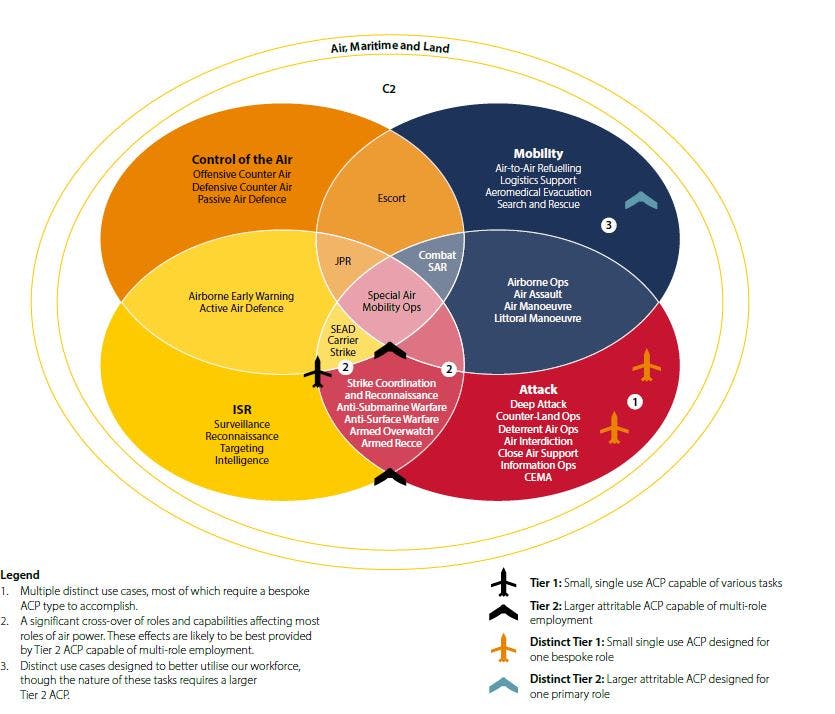
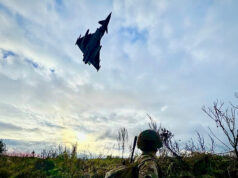
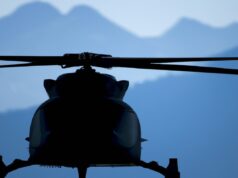
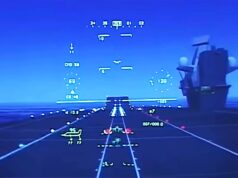
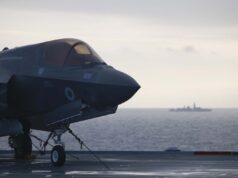

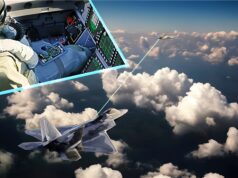
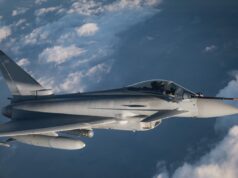
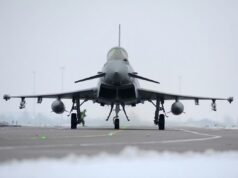
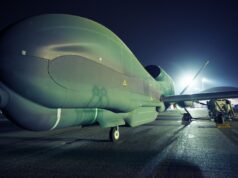


It is desperately needed. I just hope it can be brought to fruition. I was extremely sceptical at Farmborough when they announced Tempest but it does now seem to be happening. The Japanese input is a game hanger.
Re the high end loyal wingman. As much as I would like to see a home grown version, I hope we either buy a production matured Ghost Bat, manufactured in large quantities with a corresponding low price tag.
If one is developed as part of the tri national Tempest programme, it critically needs to be affordable and exportable.
Agreed, that and the MQ-25 for aerial refuelling- they are so far ahead in terms of development that I’m struggling to stick to my normal preference for domestic manufacture.
Our involvement with kitting out the Ukrainians with ‘Tier 1’ attack drones (both short and long range), ISR, etc. should put us in good stead to get a jump on large scale, low cost production of these items- which everyone is going to want.
The ‘Tier 2’ attrittable stuff is, presumably, somewhere between the two.
Spot on….
Considering the billions they pissed up the wall and they still don’t have a single jet powered drone in service and their best prospect is an Australian developed one.
Not sure they are that far ahead.
Letting air forces develop drones is the problem.
Air forces are run by pilots who think like pilots and can’t look at any aerial system that doesn’t involve pilots.
We moved from autonomous aircraft now to “loyal” wingman because we can’t possible have air combat without pilot in the loop.
The worst possible compromise now is “optionally manned”, all the limitations of an autonomous system with and the cost of a manned system.
I can see a value in optionally manned for ground vehicles, potentially maritime too. But as soon as you’re needing a significant life support system, like an aircraft or a submarine, then the cost starts looking a bit pointless as you say.
I have to admit, you’re viewing the work that Australia has put into the Ghostbat pretty harshly- there isn’t another system like it and a first is always going to be more expensive. The money they’ve just put in covers a larger manufacturing location too, so subsequent costs would likely come down. Ultimately, and depending on performance, if a high-end loyal wingman is 30-50% of a manned aircraft like F-35, it’s still a saving that most air forces would be deeply interested in.
I think what Australia done with ghostbat is great, it’s just very expensive and it’s a Boeing product.
One presumes the big question regarding cost is as to whether the US will take it on board. Will that be too big a step? Personally as this type of drone and derivatives will probably be the major new high end military product sector by the 30s it would be short sighted to forgo national or joint development of such platforms for a completely foreign derived system. Preferably we should do so within the Tempest program if we gain agreement with all parties, if not then clearly ghostbat would be high on consideration lists, but doing so might be a big hit to indigenous autonomous systems and airframes research and development that might seriously affect future programme independence once Tempest matures.
How much money has b thrown at the dragonfire project? And we’ve still got no sign of a weapon that we could put into theatre.
And will take ages to produce per unit. Building squadrons of such platforms would cost billions.
Yes optional manned is an insane way to go..the point of drones is that they can be attrition units..if it can be manned optionally it’s going to be insanely expensive…as it will need both the life support, cockpit, interfaces and controls for a pilot as well as everything needed to be an unmanned drone..that will make for an insanely expensive platform that would not be an attritional asset so making it pointless as a drone.
I would presume it would act as the ‘mother’ ship controlling associated loyal wingmen just if Ai is up to the job ( as I suspect it will be within ten years or so based on present progress) meaning in higher risk scenarios you don’t risk a pilot while only the associated drones take the true attrition risks. It arguably would mean the drones can be less complex and ‘intelligent’ while the mothership does most of that job and directs them. Yes it’s a half way house solution arguably but I don’t quite know what other solution can offer a better chance getting that flexibility and potential effectiveness in the battle space at present within any given in service date even if other solutions are ultimately the way to go thereafter. I just don’t think one can presume the technology will be mature enough by the time it’s required to produce an exclusively autonomous ‘mother ship’. And even if one believes the technology will get there, we couldn’t commit to such an airframe/technology solution separate to Tempest. It’s just not affordable so I see the logic in this route to full autonomy especially as legal ramifications on autonomous decision making on ‘kills’ has a big question mark hanging over it.
And will sell be painfully slow to produce. The Cetus submarine is a plausible way to go warfare wise , as usual, as football fans sing. ‘its all gone quiet over there. Is there a clear plan? Naval iron air projects? What do we need first?
I have some sympathy with that view but the problem is as technology stands at the moment optionally manned is the sensible concept the only other choice would be no manned at all which by the thirties might actually be the next solution but is anyone going to guarantee it at this stage and we can’t wait until we do. We at present have to plan to build a manned fighter so making it optionally manned is really just a useful bonus on the way to totally autonomous or remotely controlled.
yup, never understood with and without pilot idea.
The individual cost for a platform at the forefront of. The technology will be massive even the British programmes already in development such as Mad Fox and the big Cetus submarine is costing £ millions.
What’s all this tier one rubbish? We’re the only tier 1 nation left in the F 35 project, but we don’t appear important enough to get our order with any kind of priority.
I think we may be talking at cross purposes Andy; The military love of the term ‘Tier1’ means that we could be talking about our very best SF units, our status within the F-35 programme (I agree with you that there must be a Tier 1+ and Tier 1++ above us, if our treatment is anything to go by), or -as I was in my comment here- about the RAF’s new definition for small single use drones.
UK is the only Tier 1 member and this had us intimately involved in the conception, design and short list selection of the JSF and manufacture. The slow rate of production deliveries and integration of UK specific weapons is down to one thing and one thing only, MoD reluctance to spend money! There is no higher level than Tier 1 and no nation other than the US more involved in the F-35 at a higher level than the UK.
That may be true on paper. And I agree, the Tier 1 status has nothing to do with the slow rate of procurement and weapons integration. Delays to the overall programme is the main driver of that.
But it’s Germany who benefitted from the spare manufacturing share created when Turkey was kicked out of the programme, and they aren’t even buying as many as us last time I checked. We didn’t even get a look in.
Israel have their own bespoke stores and maintenance management system that is not subject to US oversight and, as I understand it, have unprecedented access to the software code of the aircraft itself so they can integrate their own stuff to it. We are given nowhere near that level of autonomy on the product.
I’d consider that significantly beyond the benefits enjoyed as our Tier 1 status- and that is what I was referring to in my comment.
Australia just paid $400 million for 3 additional ghost bats so not sure what you’re thinking about low price tag.
It’s a Boeing product, Boeing can’t spell a project name unless it has billion in it.
And everything it touched for the past twenty years turned to s**t.
Well Jim, it’s way down the development pathway and still in the pre production phase.
Costs at this point are still high, if it’s quantity ordered by both the Americans and the Australians, the unit price will drop like a stone.
I know you’re all about UK Plc Jim, nothing wrong with that, but let’s face facts, the UK orders things in such small numbers now that a national programme makes little sense from a financial perspective….
I’m all for something developed within the Tempest programme however.
Ghost bat is a Boeing product and Boeing only works cost +, they don’t have a reputation for dropping prices like a stone in any circumstances. Neither the US or Australia are anywhere near ordering it either.
It be cheaper and easier digging up Taranis than going with MQ28
If it’s American it all about what number of dollars the likes of boing will get from it.
But on the bright side, this is a Boeing product that doesn’t have any pressurised doors on it …
Yes but will it do a full power dive into the ground Boeing special manoeuvre.
It’s obviously expensive at this point as it’s still at the prototype stage. When you consider that the usaf plans to buy at least 1000 loyal wingman drones (Possible ghost bat or some other aircraft) the price will drop significantly for whichever is chosen. And yes they are far ahead. How long do you think it would take for the UK to progress through all the stages of research and development to get to where they are now? These things don’t just happen overnight.
About the same stage Taranis was at ten years ago you mean?
Are you confusing Taranis, a tech demonstrator( A very promising one) with the ghost bat, a semi-autonomous aircraft that is much further along in development and almost certain to go into production?
No, taranis was a tech demonstrator and was autonomous, MQ28 is a tech demonstrator and also autonomous. Both cost a similar amount to produce both perform broadly similar roles and have similar capabilities.
I hope Australia moves forward onMQ28 but I’m doubt it will have US assistance as they have dozens of contractors getting in on the act and no one likes Boeing for anything at the moment.
Taranis looked like the future for the UK air and sea operations capabilities
Jim, in the Ghost Bat world, no 1 is Boeing, no 2 is BAE. Taranis isn’t dead, it’s relocated, had a shape change & a lot more money thrown at it. The airframe is Boeing, the smarts is BAE. The smarts is the tricky bit. Get that right & you can build any airframe you like around it.
at the same time Taranis was operating the Taranis sized X47-B on carriers. they’ve had the RQ-170 in service for probably 2 decades and the much larger more capable RQ-180 flying for a long time. Many of their drone programs are black projects but its obvious they are world leaders.
Simply put if the UK can produce this product in the same timeframe for anything less that around 150% of the cost of a foreign product we should buy the British one.
Agreed attritional drones are going to need to be well below the cost of a manned system..otherwise what’s the point….if the cost of an F35 is around $100 million…and ghost bat costing in at $130 million each they just don’t make sense…you cannot use them to increase mass at that cost..your just removing one life from the equation..which is a fine thing to do for single operations..but if your considering mass needed in a “long war” peer conflict it does not add up….the brutal truth is spending more money to save one life in a conflict that will claim hundreds of thousands…does not add up..if drones are to work they need to be cheap and expendable..so you can throw them at something to save your expensive manned asset.
Remember when Kratos was banging on about XQ 58 costing $2million each, that lasted 5 minutes now they are $10 million each and will likely rise to $25 million once they get anywhere near being combat ready.
Yes and the British taxpayer has been thrown out as part of the projects
Was there to be an ‘or’ to that? The ‘either’ suggests it.
Come again, as the actress said to the vicar…..
The taranus drone looked to be a good platform which could have been developed further than it was. Videos of it on it, looked. Very impressive.shame it’s not going to happen. Such a vehicle would have been a good option for carrier operations.
I just hope they see this strategy through to fruition. There have been a number of different initiatives in the past, technology demonstrators, studies, etc.. What we need now is a deployable capability. However, I expect that will require some serious expectation management if the timeframe of 6 years is to be achieved. The only way I can see that being done is if the services accept the concept of spiral development.
For the Tier 2 ACP’s that would mean a basic, but useful, platform being introduced and a programmed set of capability enhancements being added as technologies develop and mature.
In the case of Tier 1 ACP’s that might mean a constant stream of new more capable units being procured over time. If costs allow older units that are still on the shelf might be upgraded, but it should be remembered that Tier 1 are in effect throw away units. To my mind that means if the purchase price of new units is such that updating older units is viable then the purchase price would need looking at… i.e. has some idiot managed to apply the gold plating to a plastic spoon..?
Spiral development should allow for rapid on going improvements in force capability and as well as allow for changing requirements as threats evolve. It can also speed things up if you are short of engineers, which we are, provided development priorities are techologically realistic and matched to operational needs, as it allows you to focus available effort on what is really needed.
The good news is that the RAF have been pretty successful in applying spiral development to their Typhoon fleet, so hopefully they can move that experience across to the new program.
We will see if anything does come along by 2030. I ain’t holding me breath.
Cheers CR
As long a Boeing are not in the equation? Fine.
We need to be careful about kneejerk reactions to Boeing. We did that with BAe in the early 2000s and it got us Ajax instead of CV90 and Foxhound instead of RG35 and seriously degraded our industrial base. We need to learn how to negotiate better terms, not walk off in a huff.
Not buying Boeing will not harm our industrial base one bit. The Ajax allegory does not fit here, and if anything, Boeing would be GDUK, and BAE would be themselves.
I expect to see this shelved 18 months down the line in a typical MoD moment
Don’t worry, if you read carefully you will see that there is nothing to actually cancel.
This is just another excretion of the c**k wombles at the MOD, atleast in the past we use to generate a tech demonstrator then side line the project, now they just make up a six symbol diagram, pay Boston consulting £25 million and file it all in the MOD filling cabinet and act like we never had a drone program running for 25 years that’s never actually delivered a drone to the front lines.
“The Defence Drone Strategy provides the core reference baseline for the RAF ACP Portfolio ensuring coherence for the introduction of new developments in capability”
I’m really glad we got that sorted, I wonder how many millions it cost to achieve a “core reference baseline”
Any chance we can just go out and buy some f**king drones now or do we need 5 more studies to further establish a “core reference baseline”
Honestly who writes this s**t, I’m guessing it’s a combo of Boston Consulting and Deloitte and they probably got paid several million for it.
They don’t do it for fun. I spend a lot of my time despairing of people who’ve bought some kit without proper consideration as to how they expect to integrate it with the wider systems they want to use, or even exactly what the use-case is. It is not as smart or cost-effective an attitude as you seem to believe.
The MOD has been so careful about what kit to buy for autonomous jet powered Drones for the past twenty years that they did not buy any kit at all, not a single thing.
That’s the best way to make sure you made the best decision, just don’t make any decision at all and just keep having more studies.
Could you expand on which autonomous jet-powered drones you think MOD should have bought over the last 20 years? There aren’t all that many autonomous jet-powered drones, as opposed to RPAS. However, the RN has bought Banshee Jet 80+, which has an autonomous mode.
I agree it’s only the last 18 mths in Ukraine that any real world understanding of what is needed has really been focused. Things are transforming so quickly on an almost monthly basis in terms of autonomy generally that I have heard even knowledgable commentators in the business, saying the progress in Ai in particular was totally unforeseen even a couple years ago, so it’s not an easy task to solidify upon a platform towards the middle to top end unfortunately, even if I do agree with others, decisions will have to be made asap while making sure it is as upgradable as possible so as to future proof as much as possible. However Bae is still developing its platforms that have direct development links back to Taranis, it’s not all been wasted as some seem to think, Manta was being tested in recent years and their LANCA proposals are being refined as demonstrated recently when a new refined image/model was revealed last month, even though little else was revealed publicly.
I think lesser spec drones of the type used in Ukraine so successfully is a different matter and far more urgent indeed in my view. But an awful lot is going on we know only a little about. We know we have sent thousands of drones to Ukraine and at least one heavy duty drone that we previously read about on here last year, is being operated by Ukrainian Marines on the Kherson front, indeed it seems it was vital to their operations, as revealed from a Ukranian source. So I think a lot is being kept in the dark in this regard, just hope it is seriously moving buying options forward.
That’s strange, I remember watching a documentary on the F35 in 2001 where the pilot is pretty sure the US will never develop another manned aircraft and everything else will be unmanned drones flown by AI. Here we are 23 years later and unclue Sam just cut a cheque for $12 billion for a manned fighter that can be “optionally manned” and is gearing up to spend a few hundred billion more on it.
Actually until about 2015 the very definition of 6th Gen fighter was unmanned. Then LM marketing department got involved again.
This change was seen decades ago, two groups have done their utmost to block it.
Airforce leadership, because pilots run the Airforce and who will run the Airforce if there is no pilots. They even insist on qualified pilots operating autonomous drones because you can’t possibly have non pilots operating autonomous systems.
Defence contractors because drone are cheap and manned aircraft cost tens of billions of dollars and only a few companies on the planet can build them where as dozens can build drones.
These two groups managed to then come up with the twin concepts of loyal wingman and optionally manned.
Keeps pilots in their chairs and keeps the billions flowing to the military industrial complex.
Taranis would have been a very good start.
Jon, what’s the difference between an autonomous jet-powered drone and a RPAS?
Obviously jet-powered is one key difference, but aren’t our current UAVs – MQ9, Banshee and Watchkeeper – autonomous? I am a complete layman on UAVs!
I can see it would be useful to have a jet-powered UAV for some types of missions, not least to keep up with the Tempest mother ship, but for most swarm attacks and close support roles, such as targeting enemy artillery and troop formations, would not larger numbers of cheaper, simpler, non-jet-powered drones be more useful?
Could one take a basic drone like Watchkeeper and upgrade or spiral develop it to meet a lot of the needs?
In reality we already use autonomous systems that target and destroy threats without a man in the loop- CIWS being an obvious example. In fact we’ve been using autonomous killing machines for 1000s of years- they’re called ‘booby traps’. Since humans are not capable of reacting as fast as machines insisting on a man in the loop will just put you at a disadvantage versus an enemy who has no such qualms. Inevitably then, we will sooner or later be building and deploying AI machines that attack based on their own judgement. Best to just make sure they’re as smart as possible.
You know what a sensor fused munition is? We have been letting machines make calls on killing people for decades.
Its worrying. I’m with Ripley on this 🙂
So many big words and pretty pictures just to say we need some drones. Pathetic waste of time and money.
Please……JUST BUY SOMETHING and get it into service.
No more “informing decisions”
No more “intital gates”
No more concept studies grandstanded then dropped after millions spent.
BUY SOMETHING.
Rant over, apologies.
Why apologize for being correct😉
They treat it like a pick-and-mix, at the sweet shop
As you mentioned above we need to stop faffing about and buy something
Rant away, as a tax payer your earned it 😀
Exactly this. We have a fully functioning working drone in the shape of the Banshee. Ok, it’s not a super attack drone or anything fancy, but its a proven thing and in production. It is moderately stealthy (difficult to track) by all accounts, and presumably could be made a bit more stealthy without too much trouble. It does 400 mph and no doubt could have a better range.
It should not be beyond the wit of man to weaponise it, or provide it with better electronics.
Not cutting edge, but out there. Get some in the air and then faff around trying to decide exactly what you want them to do.
At work I once criticised a document being issued about something or other which in my opinion was not fit for purpose, and the wisdom returned to me was that if you never write the document, you have nothing to correct or improve on. This seems to be the case here. Endless theoretical studies.
AA
Isn’t an updated version of the Banshee being tested on US test ranges currently? Read something recently but can’t remember the details.
A version was developed for the usaf, the MQM 185B. It says it can go up to 30 000 feet and also sea,-skim.
There was one shot down/,crashed in Ukraine recently as well,with a modified tail, so someone has given them an upgrade.
Its having jet angines that gives it the edge…if thats not an obvious thing to say,
Over prop powered drones. 400 mph is a step above most of them. Although not up to loyal wingman standards. Which are…???
AA
According to a report by Shephard, Richard Knighton said Tier 1 should be operational by next year.
“Our current position means that I think we can deliver an operational capability at Tier 1 in the next year,” Knighton said, adding that the fate of the other two tiers will be assessed in the next iteration of the Integrated Review and the next defence spending review.
Shephard Media
My only problem with this is that Banshee is a given example of Tier 1. So if it’s transferring a cheap drone from Navy to RAF, why won’t it be running this year? Remember when we all thought the RAF would lead the way with LANCA, and the RN was going to adapt the RAF’s Mosquito?
I wonder if Jackal will be ready next year. There was a 160-unit launch order from Taiwan “pitched at a price-point between expendable and attritable”, or just under £200K according to the Daily Mail. Not sure when production will start, or when/if we could see a UK order.
Ah Jon, thanks for this. You’re always the go to guy here on Drones.
So how will a T1 like Banshee operate in practice when in RAF use? Dropped from another aircraft? It’s range must be be minimal compared to a larger fighter jet, so it can not accompany from the home field. With the RN the “airfield” can move, in the RAF it will be from a fixed base far from where the Banshee will be needed?
They will need to figure a way to launch banshee from the proximity of 5 star hotels if they want the RAF to adopt it on land 😀
That’s easy. Just use the roof!
Agreed with every single word of that rant 👍
Yet another “looking at”. Wake me up when we say we’re ordering something.🙄
Slightly off topic but army recognition reported on Monday the following:
Thales UK to double production of Martlet, NLAW and Starstreak missiles
Interesting stats of what the Uk has handed over at the end
Does anyone know if these new builds are “ER” or just the standard models? Range matters… Lol 😁
That’s a very interesting overall question, you’d think after handing over 6900 NLAWs, 1800starstreaks and 300 LMM, that a lot of feedback would have been generated allowing the Uk to tweak the weapons in question
“They” don’t have to tell us… but half more to double the range would be very handy.
OTT, just read on Janes that Leonardo are trying to sell the Wildcat to NZ. And I think to the Phillipines. Good luck for that!
Philippines has already purchased the Wildcat (2) which they received in 2019. Its a damn good helicopter
Yes. I think with them expanding their naval fleet that there’s a request for some more helos. Up against the Seahawk though. Would be good for the UK helo industry to get a couple more orders.
He’s hoping 🇬🇧
Are there ER proposals or in development/production versions of these missiles then?
Evening Spy, I have no idea, which was why I was asking. Just curious as it could be an opportune time for incorporating improvements such as extra range.
Speaking of extra range, would you be able to stick a Martlet/LMM on the front of the StarStreak booster? Then you’d get the LMM up to ~mach 2 before the motor even fired, with the martlet acting as a sustainer, a bit like the Pantsir missile. That is command guided, which I think would also be useful, as it allows the missile to lead the target and follow a ballistic arc, neither of which beam-riding LMM can do.
For Boxer (almost certainly our next SHORAD platform), there’s just so much more space available than on Stormer that is seems a waste to use the same little turret thing. This mash-up missile would be 2.3m long rather than 1.3, but even then you would probably be able to have 12 on the turret rather than 8 (also need radars for command guidance).
That would give you a 10-12km range SHORAD missile that is more able to hit faster targets.
Evening SB, I love your creativity. I hope someone takes you up on it! 😁
You’re welcome
It probably helps being, I would assume, “significantly younger” than any of the other commenters on here (trust me), as well as not actually having direct experience of any of the issues.
Same as you buy from Currys
“Currys”, is that a 🇬🇧 thing? Or, 🇮🇳 🥡?
Yet again… how much has been spent so far on numerous dead ends with nothing yet coming close to service?
Or will it just achieve the objective of pumping more of our money into the government favoured money pit of the day?
For once just get something f###ing useful into service fast in time for when it’s needed, rather than reacting to save face when body bags start arriving home!
Millions of pounds on dad’s like motherships and lasers that never look like happening, ships that seem to have been in build forever ships like those echoes,which could do anything that a river can. It’s just a bloody mess
The explosion of drone warfare has led me to wonder what the navy is tweaking the mad fox drone to do.
In the centre of the graphic there is reference to ‘Combat SAR’. Does the RAF/Army have a dedicated CSAR system at present? Similar to the US military?
the recently purchased MH-47Gs will fill that roll i imagine…
In 1965 the then Minister of Defence, one Dennis Healey cancelled our very advanced fighter and bomber development programs, stating that future aircraft will be unmanned and many RAF dreamers were behind him. Fast forward 60 years and the RAF dreamers are at it again. Unfortunately I doubt if I will be alive in 20 years time when the dreamers surface again and we are still at the stage of 1966. The RAF are very good at dreaming, they always have been.
The UK must be at the forefront of developing this technology, there is no doubt that future of warfare will be with autonomous hardware and the place at the front of the queue will befit us militarily and with the export markets